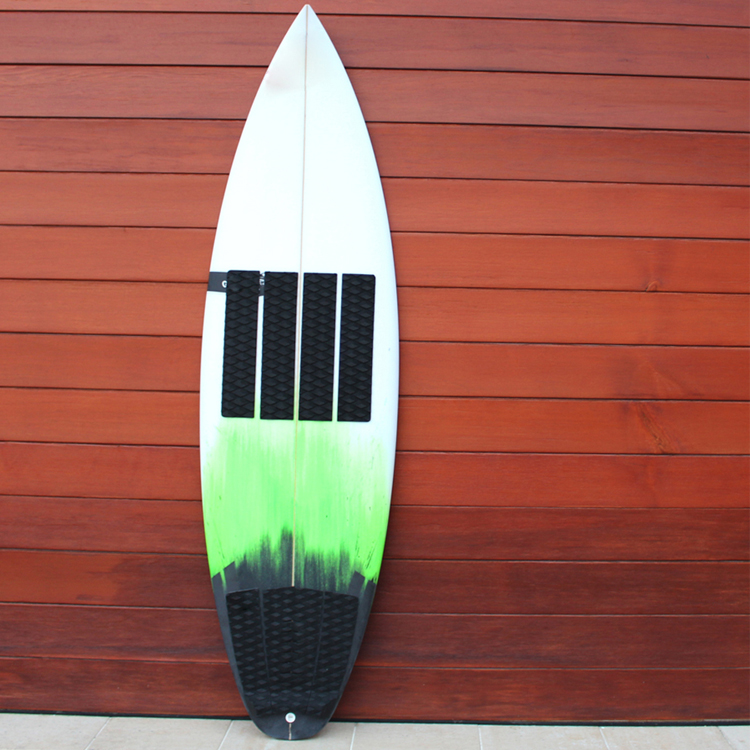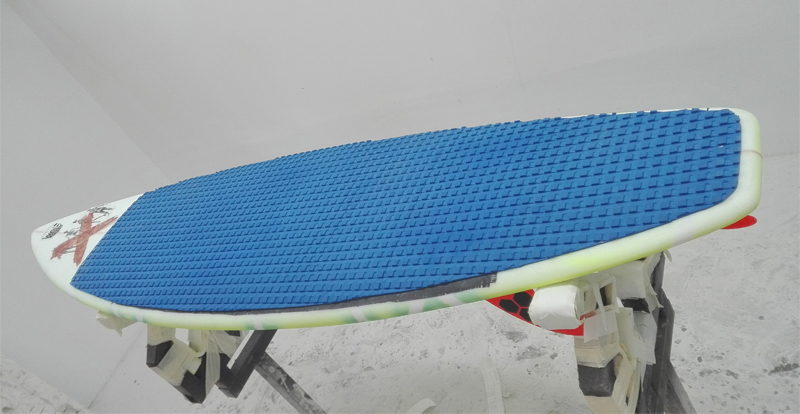Investment casting dates back thousands of years. Its earliest use was for
idols, ornaments and jewelry, using natural beeswax for patterns, clay for the
moulds and manually-operated bellows for stoking furnaces. Examples have been
found around the world: from Mexico to Mesopotamia, and Egypt to Africa where
the investment casting process produced detailed artwork of copper, bronze and
gold.
 EVA Deck Pad is normally applied on kite board and SUP. The whole thing is about traction, non-skid, and strong grip to control.
EVA Deck Pad is normally applied on kite board and SUP. The whole thing is about traction, non-skid, and strong grip to control.
 We are proud to offer 24 different textures for customers. There are different degree of traction among them, which meets the different traction requirements from different customers. Some will be more grip, some will be more smooth and comfortable. And we are always in process to develop new textures, to provide more and more options to customers.
We are proud to offer 24 different textures for customers. There are different degree of traction among them, which meets the different traction requirements from different customers. Some will be more grip, some will be more smooth and comfortable. And we are always in process to develop new textures, to provide more and more options to customers.
The earliest known text that describes the investment casting process was
written around 1100 A.D. by Theophilus Presbyter, a monk who described various
manufacturing processes, including the recipe for parchment. This book was used
by sculptor and goldsmith Benvenuto Cellini (1500 – 1571), who detailed in his
autobiography the investment casting process he used for the Perseus and the
Head of Medusa sculpture that now stand in the Loggia dei Lanzi in Florence,
Italy.
Investment casting came into use as a modern industrial process in late
19th century, when dentists began using it to make crowns and inlays, as
described by Dr. D. Philbrook of Council Bluffs, Iowa in 1897. Its use was
accelerated by Dr. William H. Taggart of Chicago, whose 1907 paper described his
development of a technique and formulated a wax pattern compound of excellent
properties, developed an investment material, and invented an air-pressure
casting machine.
In the 1940s, World War II increased the demand for precision net shape
manufacturing and specialized alloys that could not be shaped by traditional
methods, or that required too much machining. Industry turned to investment
casting. After the war, its use spread too many commercial and industrial
applications that used complex metal parts.
Modern investment casting techniques stem from the development in the
United Kingdom of a shell process using wax patterns known as the Investment X
Process. This method resolved the problem of wax removal by enveloping a
completed and dried shell in a vapor degreaser. The vapor permeated the shell to
dissolve and melt the wax. This process has evolved over years into the current
process of melting out the virgin wax in an autoclave, or furnace.
EVA Traction Deck Pad is a kind of for water sport like surfboard, kite board or SUP, it can provide a strong traction for people enjoying the water sport.
EVA Traction Pad, also knows as tail pad, is to be applied on the tail of surfboard. With arch and kick tail, the surfer can control the direction and stability when surfing.


Eva Traction Deck Pad,Coaming Pads,Eva Deck Grip,Eva Traction Pads,Eva Grip Pad,Sup Deck Pad
Huizhou City Melors Plastic Products Co., Limited , https://www.evadecking.com